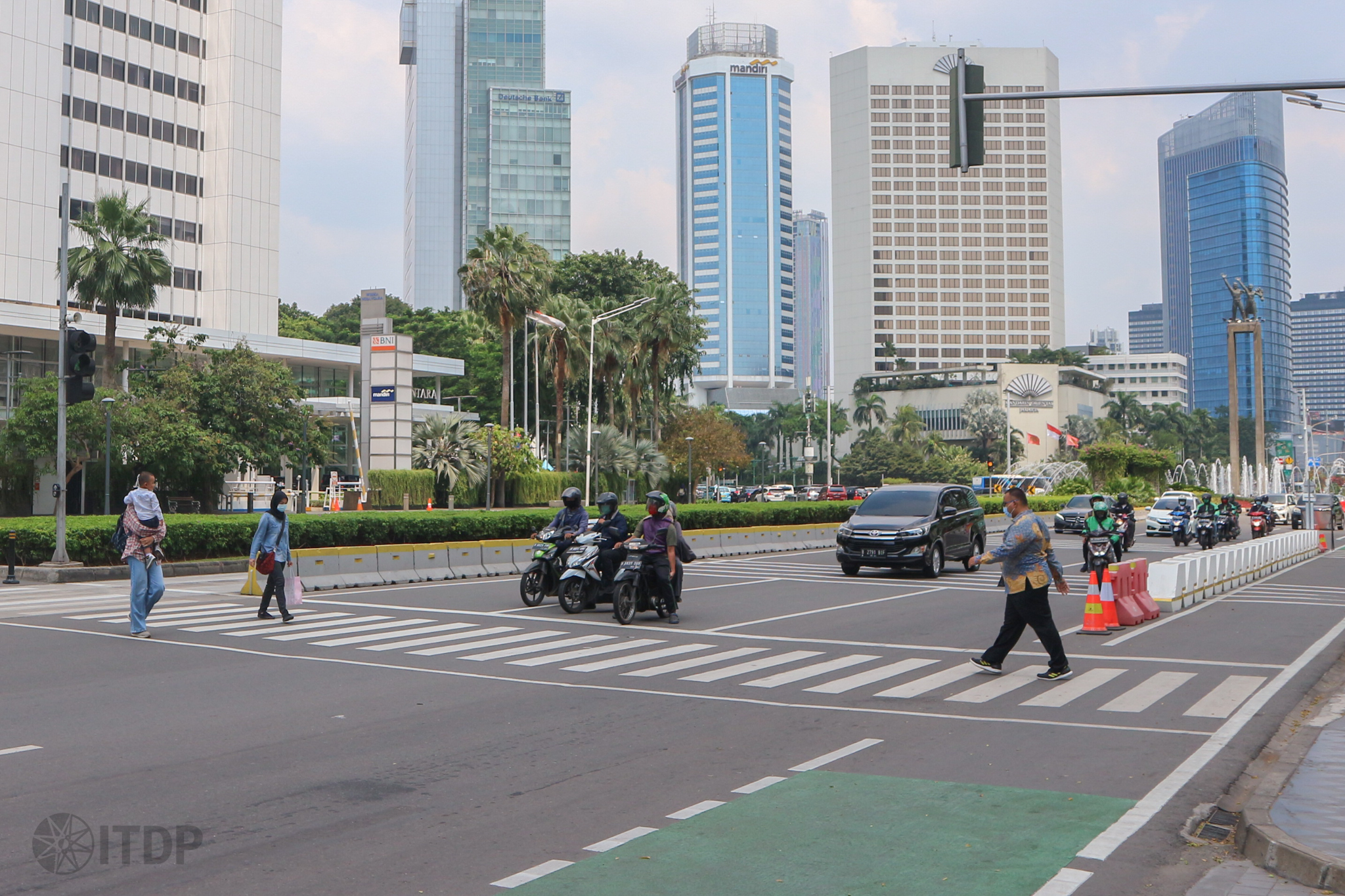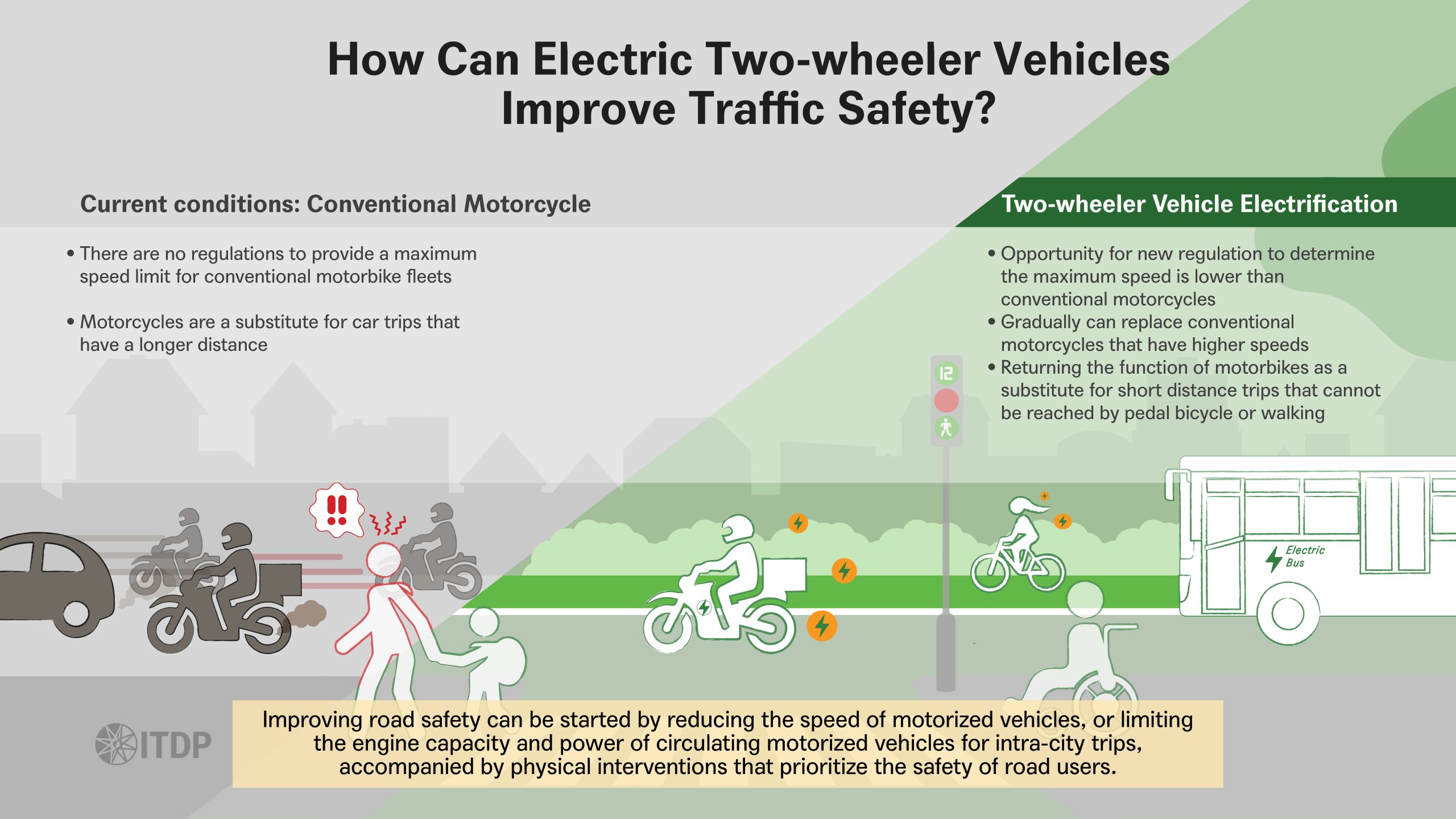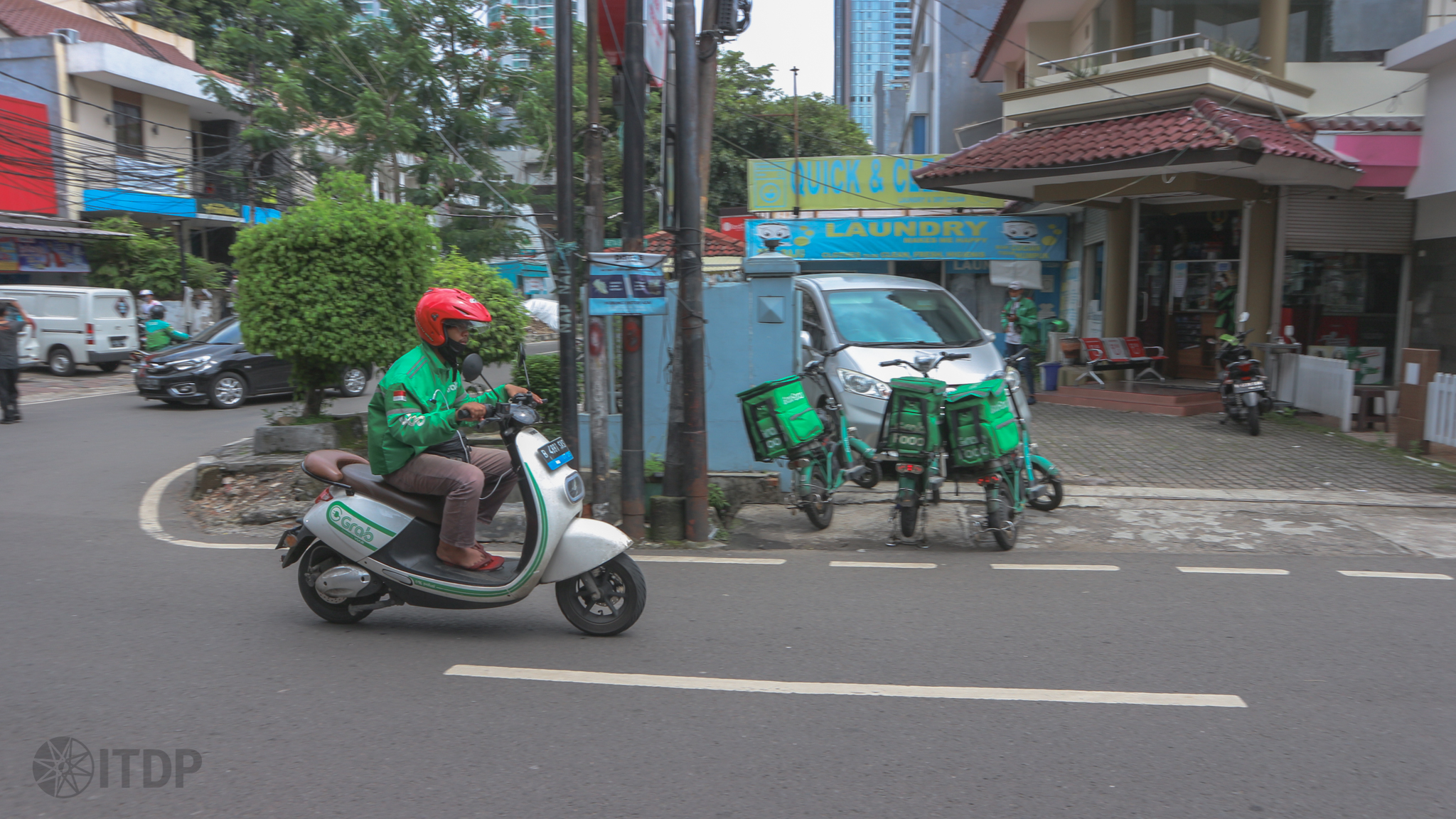August 24, 2023
Improving Road Safety Through the Adoption of Electric Motorcycles
By Michael Tanuhardjo, Urban Development Associate ITDP Indonesia
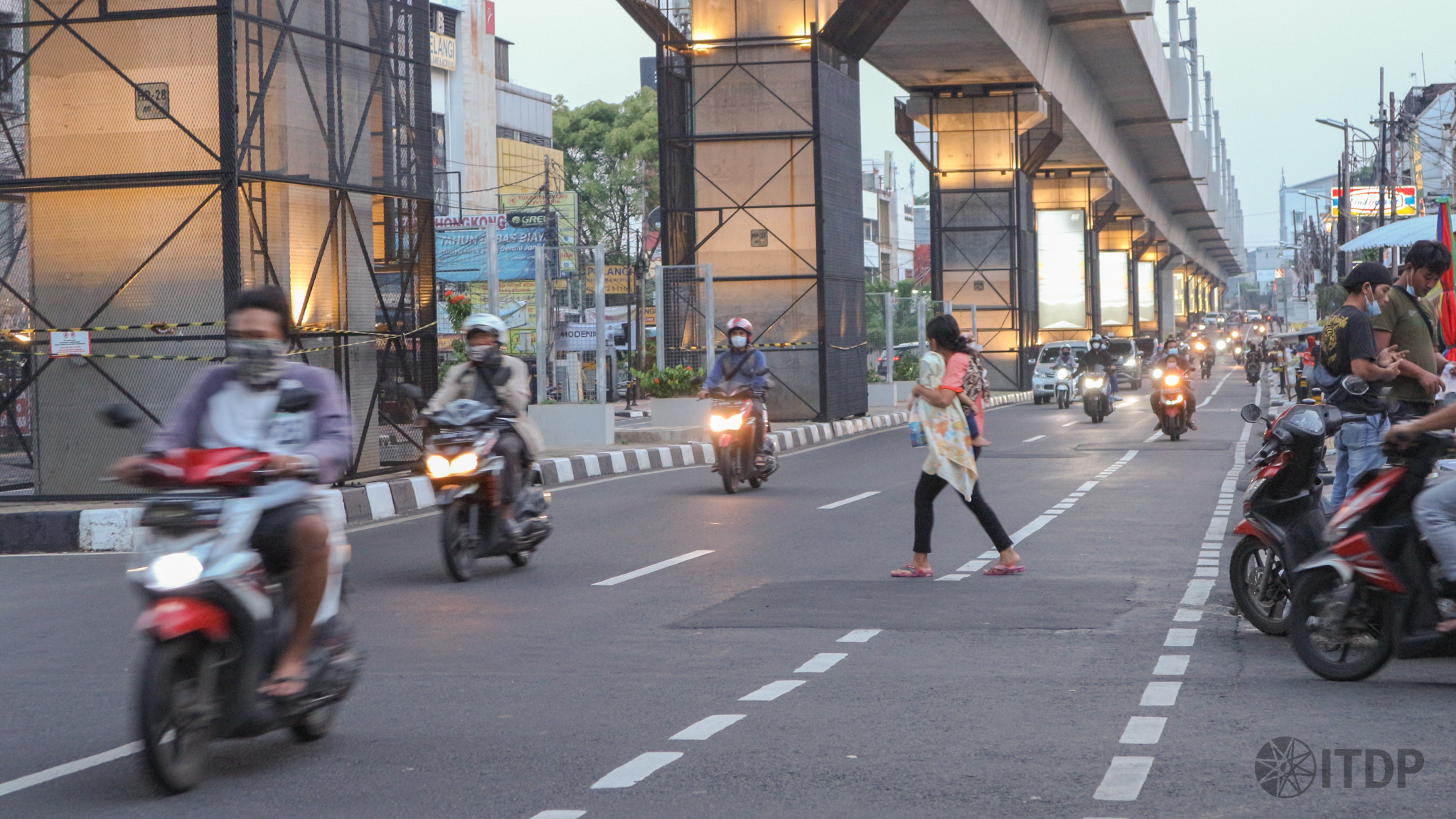
The government decides to provide subsidies to electric vehicles; VAT cut from 11% to 1% for electric cars and subsidies of an average of 7 million per unit of electric motorbike with the aim of reducing air pollution. With the popularity of motorbikes, if motorbike electrification planned properly can also reduce the level of traffic accidents on the road.
In line with the high popularity of motorcycles in Indonesia, traffic accidents in Indonesia are also dominated by motorcycles. In 2022, Korlantas Polri recorded 131,500 traffic accidents in Indonesia, with a percentage of 74.35% occurring on motorbikes.
To reduce the rate of traffic accidents, it is appropriate that safety issues are handled with a focus starting from motorcycles. The Indonesian Road Safety Association (RSA Indonesia) identified five driver behaviors that cause traffic accidents, which consist of being careless towards traffic from ahead, failing to keep a safe distance, being careless when turning, being careless about the rules of the road, and being careless when overtaking1. The ease of motorcycle’s maneuvering makes it easy for motorists to perform maneuvers that often endanger the safety of other road users, such as by cutting off or overtaking other motorized vehicles. And involve violating traffic rules, such as going against the direction or using the sidewalk. This is exacerbated by the speed factor of motorized vehicles that almost certainly exceed the predetermined speed limit. Korlantas Polri recorded that most traffic accidents occurred when the weather was sunny and the road was straight2 , which could indicate the speed factor being the main cause of traffic accidents.
In general, vehicle speed can increase the probability and fatality of accidents. With a higher speed, the driver requires a longer braking distance or reaction time and has a lower level of alertness, so the probability of an accident is higher. The fatality rate for motor vehicle accidents is also in line with the high speed. The illustration below shows that the fatality rate of a pedestrian hit by a car traveling at 30 km/h (20 mph) is 10%. However, when the speed increases from 30 km/h to 50 km/h, the fatality rate increases up to 8 time3.
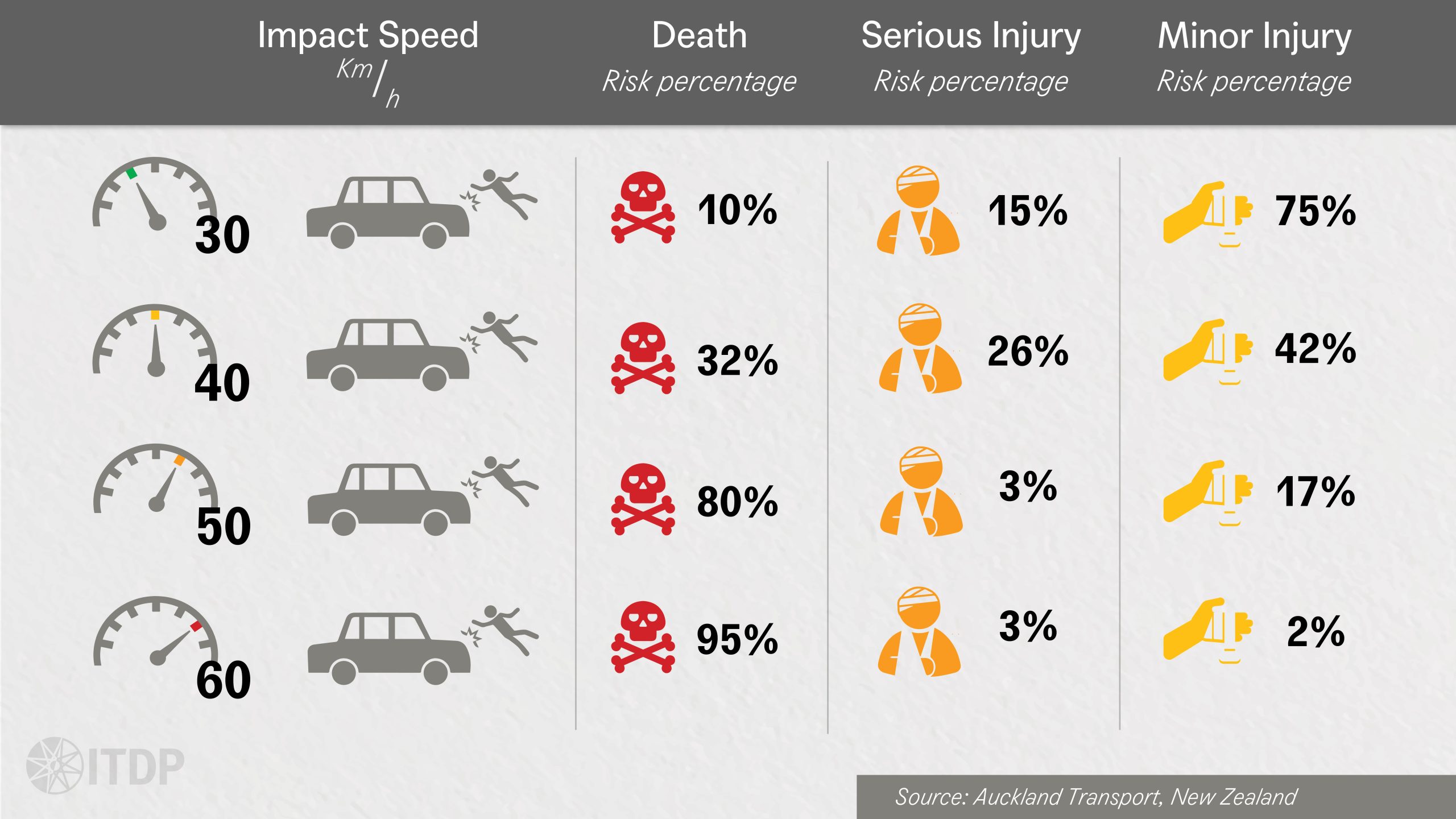
With relatively affordable prices, motorbikes are a favorite of the Indonesian people, including for medium to long distance trips which are ideally taken by a more stable type of vehicle like a car. Processed from Jabodetabek Commuters Statistics (2019), the average distance traveled by commuters using motorbikes is 18.33 km while commuters using cars cover an average distance of 25.85 km. A study by Nugroho (2013), shows that in the jurisdiction of Polda Metro Jaya, motorbike accidents occur after a driver has traveled 11.5 kilometers, which is lower than the average distance traveled by Jabodetabek commuters by motorbike. Motorcycles that are used to travel long distances, coupled with the speed factor and non-compliance with traffic regulations, make motorbikes easily involved in traffic accidents.
With the aim of building cities as pedestrians, it is appropriate to create safe and secure road spaces, starting with limiting the speed of motorized vehicles. Unfortunately, speed restrictions on roads with traffic signs or road markings are often ineffective in reducing the speed of motorized vehicles. Speed-limiting strategies with physical intervention (traffic calming) can generally be used but are often limited to certain areas. Another strategy that can be implemented is limiting the speed of motorized vehicles, or limiting the engine capacity or power of motorized vehicles in circulation, especially in urban areas.
In recent years, electric motorbikes have started to circulate on the streets. Although they are in the same category, electric motorbikes have several different characteristics from conventional oil-fueled motorbikes. Currently, electric motorcycles have a lower maximum speed than conventional motorcycles, although they have a higher torque, making it easier to reach maximum speed. With a battery capacity that is still limited, the mileage of an electric motorbike is still lower than that of a conventional motorbike, although is still more than enough for trips in the city. This difference in characteristics may be seen as a drawback for people who are used to the practicality of conventional motorbikes, but this can be an opportunist for the government to position motorcycles as they should. Ideally, motorbikes are positioned as a mode of transportation to replace bicycles instead of cars, with the target of safe short-distance travel with a maximum speed that is also not too high. Regulations issued can be improved and enforced in line with the penetration of electric motorbikes, for example by only allowing electric motorbikes with a maximum speed of 50 km/h to be sold in Indonesia, as well as gradually replacing conventional motorbikes which have higher speeds.
Aside from electric motorbikes, there are also electric bicycles in the electric two-wheeled vehicle category, either in the form of pedal assist or with a fully electric motor. By creating a safer road space for all road users, electric bicycles can be the best choice to replace short trips that cannot be reached by pedaling bicycles or walking. However, with long travel distances, especially in metropolitan cities, a supporting strategy is needed to make electric bicycles or motorbikes with lower speed only be used for short distance trips. Creating a more compact city by providing housing in the middle of the city can be the most sustainable long-term solution. Meanwhile, the provision and improvement of public transportation services and active transportation such as bicycle lens and sidewalks are needed as a short-term strategy to encourage the shift from conventional motorbikes.
Improving road safety can be started by reducing the speed of motorized vehicles. The existence of electric vehicles, especially electric motorbikes, which are the prima donna of public transportation modes in Indonesia, can be an opportunity to support motorized vehicles that are more environmentally friendly and do not endanger other road users. At the same time, it is necessary to increase the awareness of all road users, as well as improve the quality of public transportation and active transportation services. Therefore, a city is safer and livable for all.

